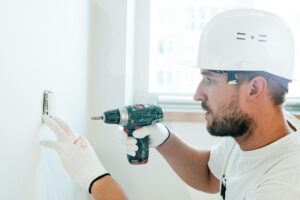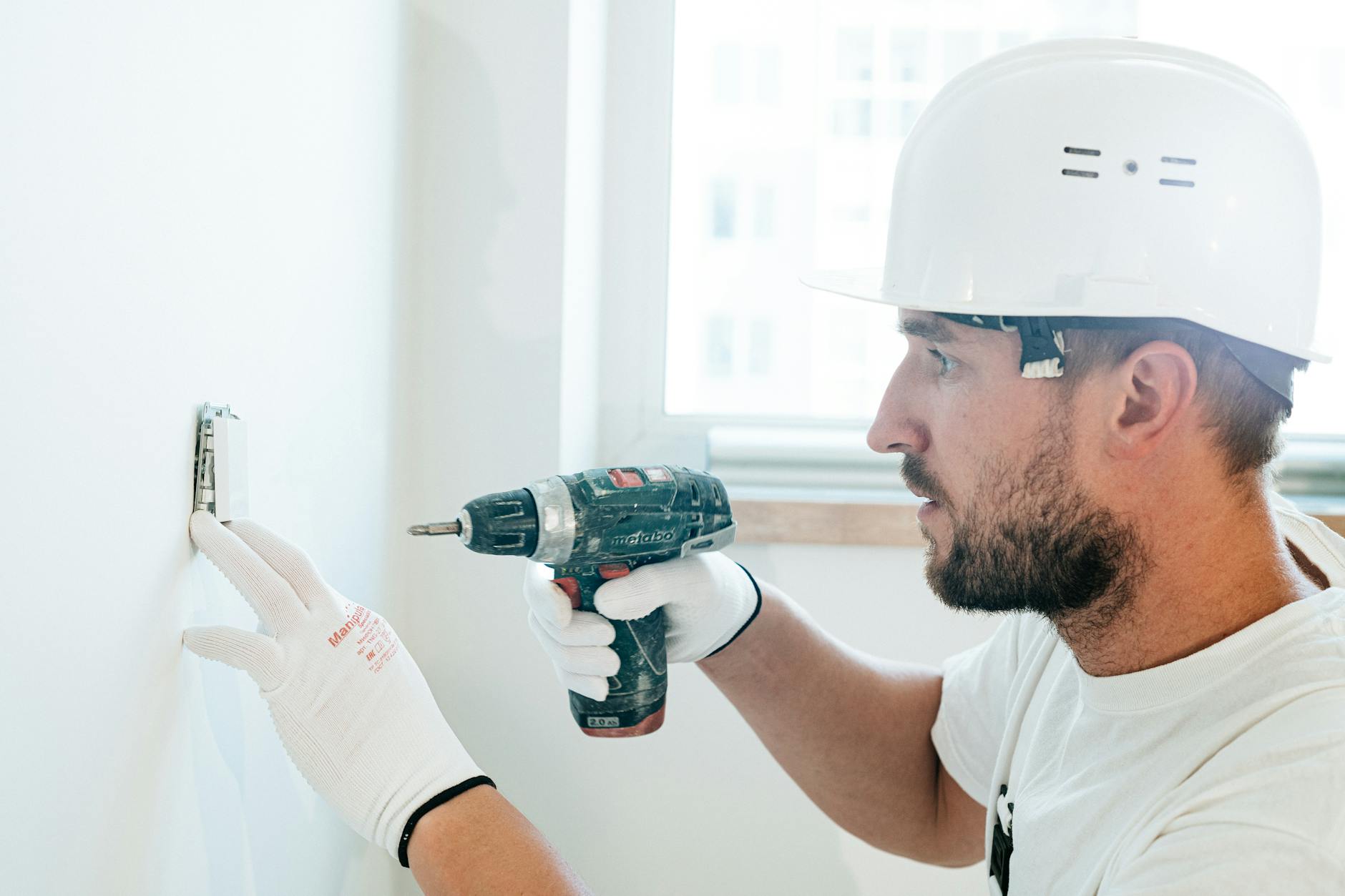Yes, using Diamond Engineering thin wall drill bits requires strict adherence to safety protocols to prevent injuries, material damage, and equipment failure. Below is a comprehensive guide to safety precautions, organized by key risk areas and supported by industry standards and best practices:
Critical for minimizing exposure to hazards like flying debris, dust, and noise:
- Safety Glasses/Goggles: Mandatory to protect eyes from shattered material fragments or broken diamond particles. Choose ANSI Z87.1-certified glasses with side shields.
- Respiratory Protection:
- N95/FFP2 Masks: Required when drilling concrete, stone, or masonry to prevent inhalation of silica dust, which causes lung disease. OSHA mandates respirators for silica exposure above 50 micrograms per cubic meter.
- Activated Carbon Masks: Use 3M™ P95 masks (e.g., 8577 model) for environments with organic vapors or solvents, as they filter both dust and odors.
- Hearing Protection: Diamond drills can exceed 85 dB; wear earplugs or earmuffs (ANSI S3.19-compliant) to prevent hearing loss.
- Gloves: Heat-resistant gloves (e.g., leather or nitrile) protect hands from friction burns and sharp edges. Avoid loose gloves that could get caught in moving parts.
- Protective Clothing: Wear snug-fitting, non-flammable clothing (e.g., cotton or synthetic blends) and closed-toe shoes. Remove jewelry and secure long hair to prevent entanglement.
Ensure tools and materials are in optimal condition:
- Bit Inspection: Visually check for cracks, loose segments, or worn diamond edges. Discard damaged bits immediately—even minor cracks can cause catastrophic failure during high-speed operation.
- Tool Compatibility: Verify that the drill’s chuck size, RPM range, and power output match the bit’s specifications. For example, MK Diamond recommends 1,600 RPM for 1″ OD bits in concrete, while larger bits (e.g., 6″) require lower speeds (700 RPM) to avoid overheating.
- Workpiece Securement: Use clamps, vises, or anchors to stabilize the material being drilled. Never hold it by hand, as vibrations can cause loss of control and injury.
- Environmental Assessment:
- Ventilation: Ensure adequate airflow in enclosed spaces to dissipate dust and fumes.
- Electrical Safety: For wet drilling, use a Ground Fault Circuit Interrupter (GFCI) outlet to prevent electrocution.
- Debris Clearance: Remove flammable materials (e.g., solvents, sawdust) from the work area to reduce fire risks.
Adjust techniques based on the target material’s properties:
- Reinforced Concrete:
- Rebar Detection: Use a Ground Penetrating Radar (GPR) like IDS GeoRadar’s C-THRU E or a rebar locator (e.g., Zircon MT7) to identify steel reinforcements before drilling. Striking rebar can damage bits, cause kickback, or create electrical hazards.
- Cooling Systems: Always use water coolant (1–2 L/min) to prevent overheating and extend bit life. Dry drilling in concrete is unsafe and accelerates wear.
- Porcelain/Glass:
- Light Pressure: Apply minimal force to avoid cracking. Use a pilot hole (smaller bit) to guide the thin wall bit.
- No Hammer Action: Never use hammer drills on brittle materials, as vibrations increase breakage risks.
- Natural Stone (Granite/Marble):
- Wet Drilling: Maintain a steady water flow to flush debris and cool the bit. Use a diamond dressing stone to re-sharpen worn segments periodically.
- Metals:
- Lower RPM: Reduce speed to prevent melting or warping. Use cutting oil for lubrication and heat dissipation.
Proper technique minimizes risks during drilling:
- Stable Posture: Maintain a firm grip and balanced stance. Avoid overreaching, as this increases the likelihood of losing control.
- Start Slowly: Begin at low RPM to seat the bit, then gradually increase speed. Sudden acceleration can cause the bit to slip or shatter the material.
- Retract Periodically: For deep holes (≥100mm), retract the bit every 20–30mm to clear debris and prevent jamming. This is especially critical in dry drilling.
- Avoid Overloading: Do not force the bit into the material. If resistance increases, stop and inspect for obstructions or dullness. Excessive pressure can damage the bit or motor.
- Dust Extraction: Connect a vacuum system (e.g., Festool CT Dust Extractor) to the drill’s exhaust port to comply with OSHA’s silica regulations. For dry drilling, use bits with built-in dust ports (e.g., CS Unitec’s 4CB Series).
Ensure safe cleanup and storage:
- Cooling Time: Allow the bit to cool completely before handling. High-speed drilling can raise temperatures to 200°C (392°F), causing burns.
- Debris Disposal: Properly dispose of concrete or stone dust in sealed containers to prevent silica exposure. Follow local hazardous waste regulations.
- Bit Maintenance: Clean the bit with a brush or compressed air to remove embedded debris. Inspect for wear and re-tip/replace segments as needed. Retipping (replacing worn diamond layers) can restore 80% of the bit’s original performance.
- Storage: Store bits in a padded case or protective sheath to prevent damage to the diamond edges. Keep them away from moisture and extreme temperatures to avoid corrosion.

Prepare for unexpected incidents:
- Power Off: Immediately disconnect the drill or remove the battery if the bit jams, overheats, or sparks.
- First Aid: Treat cuts, burns, or eye injuries promptly. Keep a first aid kit on site with sterile dressings, antiseptic, and eye wash.
- Evacuation Plan: In case of fire or chemical exposure, know the location of emergency exits and fire extinguishers.
Adhere to regulatory requirements for safety and quality:
- OSHA Standards: Comply with 29 CFR 1910.134 (respiratory protection) and 1926.1153 (silica exposure limits) when working with concrete or masonry.
- ANSI Guidelines: Follow ANSI B11.21 for machine tool safety, including proper guarding and operator training. While this standard focuses on laser tools, its principles on hazard mitigation apply broadly.
- Manufacturer Instructions: Always refer to the bit’s technical manual for specific RPM ranges, coolant requirements, and warranty conditions. For example, Bosch’s PRO Series tile bits require dry operation with wax inserts, while BOSUN’s concrete bits mandate wet drilling.
Using Diamond Engineering thin wall drill bits safely requires a combination of proper PPE, equipment maintenance, and operational discipline. By following these precautions, you can minimize risks, extend tool life, and ensure compliance with industry standards. Always prioritize safety over speed—even minor oversights can lead to severe consequences in high-speed, high-pressure drilling environments.


